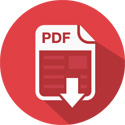2019-06
Calling for Well-Designed Standardized Nationwide Ballot Standards

Sen. Daniel A. Ivey-Soto (NM), sponsor
Sponsored by Sen. Daniel Ivey Soto (NM)
Unanimously ratified by the Caucus on December 5, 2019
WHEREAS, the National Hispanic Caucus of State Legislators has been continually committed to improving the reliability and accessibility of the voting system in the United States; and,
WHEREAS, to that end, we approved Resolution 2017-14, Implementing Opt-Out Automatic Voter Registration Across the United States; and,
WHEREAS, we also approved Resolution 2018-18, Expanding Voting Opportunities for All Americans, in which we called for an election day holiday, due-process safeguards against undue voter-roll purging, no-excuse early in-person voting for at least two weeks, same-day voter registration, and several fairness and procedural improvements to the vote-by-mail system; and,
WHEREAS, of central importance to a fair voting system is a straight-forward ballot that does not require a voter’s scrutiny to ensure they fully understand it and can complete it to their satisfaction; and,
WHEREAS, thousands of ballots are undervoted or otherwise miscast each election due to poorly designed ballots, with the elderly, new voters and minorities being most affected;[1] and,
WHEREAS, poorly designed ballots create distrust in the electoral process, undermining further voter participation and trust in elected officials; and,
WHEREAS, after issues of bad ballot design cast a cloud over the results of the 2000 presidential election, Congress enacted the Help America Vote Act of 2002 (HAVA), creating the U.S. Election Assistance Commission (EAC) with the mandate, among other things, of issuing voluntary guidance on voting system standards and serving as a clearinghouse for studies regarding election administration issues and other activities to promote the effective administration of Federal elections;[2] and,
WHEREAS, starting in the middle of the last decade, independent entities like AIGA: The professional association for design, the Brennan Center for Justice at NYU School of Law, and the Center for Civic Design began publishing ballot design best-practices standards of varying specificity;[3] and,
WHEREAS, based in part on that independent work, and fulfilling their duties under HAVA, the National Institute of Standards and Technology (NIST) and the EAC also released design guidelines for election administrators;[4] and,
WHEREAS, although multiple voluntary standards are available with varying degrees of specificity, ballot design problems persist,[5] even in cases where other states have faced and fixed the same problems;[6] and,
WHEREAS, in response to these recurring design issues, the U.S. House of Representatives included Section 1506 in H.R. 1, the For the People Act of 2019, requiring the EAC “conduct a study of the best ways to design ballots used in elections for public office, including paper ballots and electronic or digital ballots, to minimize confusion and user errors,” reporting its findings to Congress no later than January 1, 2020;[7] and,
WHEREAS, even if H.R. 1 were enacted, the results of the EAC study would remain voluntary unless further legislation is approved, and there are Constitutional concerns regarding the extent to which Congress may mandate ballot design in the states; and,
WHEREAS, Section 3001 of H.R. 1, also intends to make a new grant available to states under Title II of HAVA, in part “to implement and model best practices for ballot design, ballot instructions, and the testing of ballots;”[8] and,
WHEREAS, beyond the bad-design issues that have made headlines, ballots that differ in general design standards from state to state and, even worse, from county to county, make it difficult for organizations to educate voters on how to cast their vote properly because every significant variation requires new materials and explanations to be conceived, with the attendant higher publishing and volunteer-training costs; and,
WHEREAS, a best-practices standard can accommodate state electoral preferences in areas like ranked-choice voting and multi-choice/multi-winner elections.
THEREFORE, BE IT RESOLVED, that the National Hispanic Caucus of State Legislators reiterates its past calls for comprehensive electoral reform including opt-out automatic voter registration; an election day holiday; robust due-process safeguards against undue voter-roll purging; no-excuse early in-person voting for at least two weeks; same-day voter registration; and fairness and procedural improvements to the vote-by-mail system, including eliminating undue vote rejections; and,
BE IT FURTHER RESOLVED, that the National Hispanic Caucus of State Legislators underscores that the above ballot-submission and poll-accessibility improvements are only part of the solution, and that ensuring voters’ understanding of the ballots themselves is also an essential component of comprehensive electoral reform; and,
BE IT FURTHER RESOLVED, that the National Hispanic Caucus of State Legislators calls for a ballot design standard that promotes ease of understanding and minimization of undesired undervotes, while allowing for electoral innovation and variability on issues like ranked-choice voting and multi-choice/multi-winner elections; and,
BE IT FURTHER RESOLVED, that the National Hispanic Caucus of State Legislators supports the ballot-design provisions of H.R. 1 cited above and but calls on Congress and the President to go further, by robustly funding the ballot-design grant program; and,
BE IT FURTHER RESOLVED, that the National Hispanic Caucus of State Legislators calls on State Legislatures, without waiting for Congress to act, to enact statewide ballot design requirements, following the principles herein defined and other best-practices; and,
BE IT FINALLY RESOLVED, that the National Hispanic Caucus of State Legislators calls on State Legislatures, without waiting for Congress to act, to collaborate with other states to ensure interstate ballot similarities with other best-practices compliant states, and collectively fund an independent nonpartisan or bipartisan entity to research and determine the ballot design models and standards.
THE NHCSL EXECUTIVE COMMITTEE UNANIMOUSLY APPROVED THIS RESOLUTION, AS AMENDED, ON MAY 6, 2019 AT ITS SPRING MEETING IN WASHINGTON, DC.
THE NATIONAL HISPANIC CAUCUS OF STATE LEGISLATORS UNANIMOUSLY RATIFIED THIS RESOLUTION ON DECEMBER 5, 2019, AT THE ANNUAL MEETING IN SAN JUAN, PR.
[1] Lawrence Norden, Better Ballots (2008 Brennan Center for Justice at NYU School of Law), available at https://www.brennancenter.org/sites/default/files/legacy/Democracy/Better%20Ballots.pdf
[2] EAC, the Help America Vote Act, available at https://www.eac.gov/about/help-america-vote-act/
[3] AIGA, Election design tools and resources (AIGA: The professional association for design), available at https://www.aiga.org/aiga/content/why-design/design-for-democracy/election-design-tools-and-resources/; Lawrence Norden, Better Design, Better Elections (2012 Brennan Center for Justice at NYU School of Law), available at http://www.brennancenter.org/publication/better-design-better-elections; Center for Civic Design, Field Guides to Ensuring Voter Intent, available at https://civicdesign.org/fieldguides/
[4] NIST, Voting Publications, Human Factors: Usability and Accessibility, available at https://www.nist.gov/itl/voting/publications (the assistance of NIST was mandated under Section 221 of HAVA); and EAC, Designing Polling Place Materials, available at https://www.eac.gov/election-officials/designing-polling-place-materials/
[5] See, Dana Chisnell, How a badly designed ballot might have swayed the election in Florida (The Washington Post, Nov. 12, 2018), available at https://www.washingtonpost.com/outlook/2018/11/12/how-badly-designed-ballot-might-have-swayed-election-florida/?utm_term=.22ab577495e5 ; and see Caitlin Ostroff, Bad ballot design may have changed Florida’s election outcome. But there’s an easy fix (The Miami Herald), available at https://www.miamiherald.com/latest-news/article226292680.html. The use of these notes in this Resolution does not intend to question the result of the 2018 US Senate election in Florida, only to highlight that design problems were used by many to question it without a definitive answer.
[6] See Ostroff, supra, noting that the increased undervote potential of placing of a voting area under the instructions, as happened in the 2018 Broward County Florida ballot, had been previously identified by King County Washington in 2009, forcing the Washington State Legislature to enact prohibitions against it. The UAC, supra note 4, also cautioned against this ballot design problem since 2009, but that caution went unheeded by both King County and Broward County.
[7] Amendment 72 of Rep. Harley Rouda (CA). As of this writing, H.R. 1 remains pending before the U.S. Senate, where Leader McConnell has stated it won’t get a vote, citing provisions other than the ones referred to in this Resolution. See, https://www.vox.com/2019/1/18/18188150/mitch-mcconnell-house-democrats-anti-corruption-bill-hr1
[8] Amendment 89 of Rep. Lois Frankel (FL). The amount of the grant is at least equal, in dollars, to the number of votes cast in the two most recent Federal elections, allowing pro rata reductions if appropriations are insufficient.

